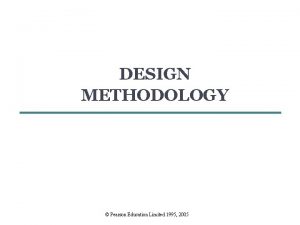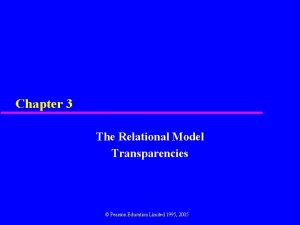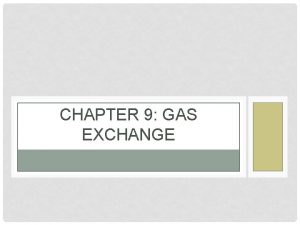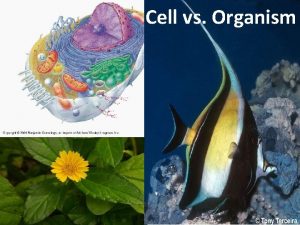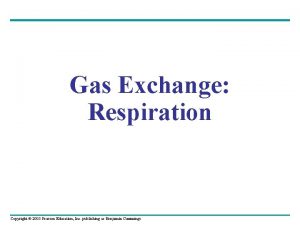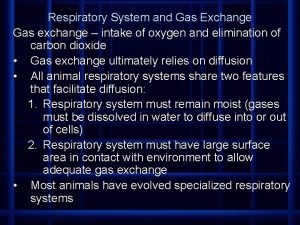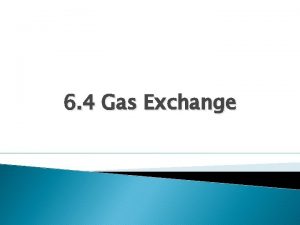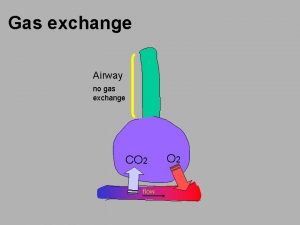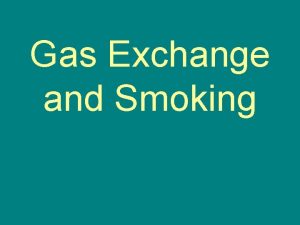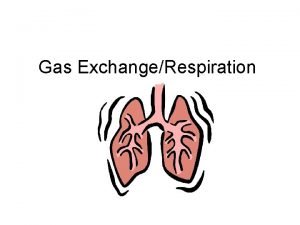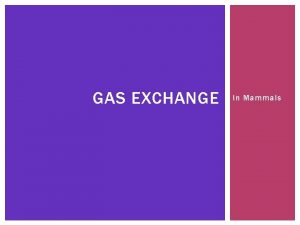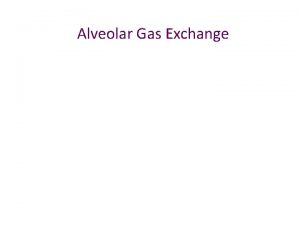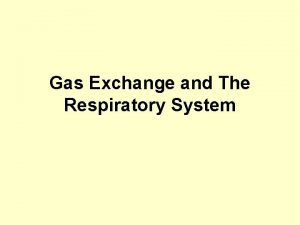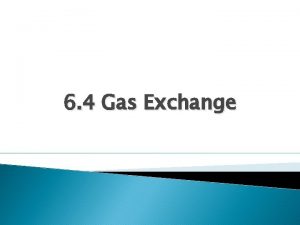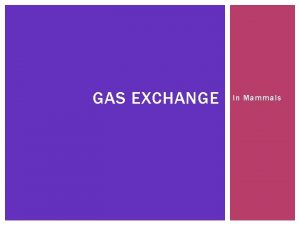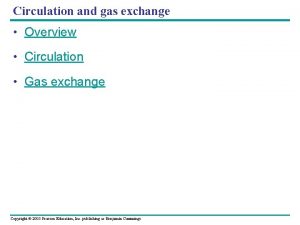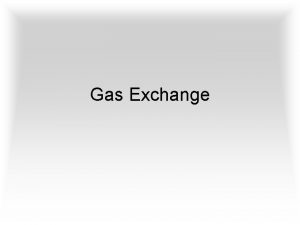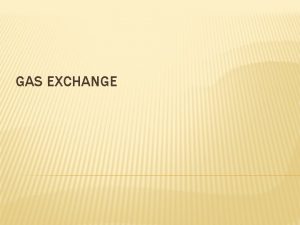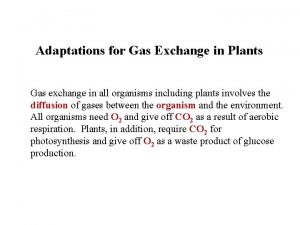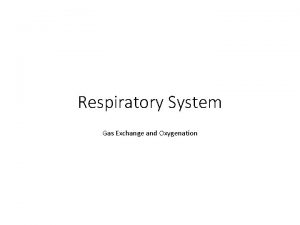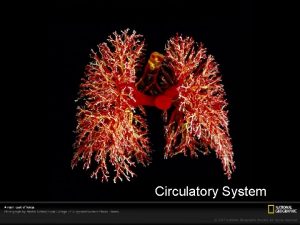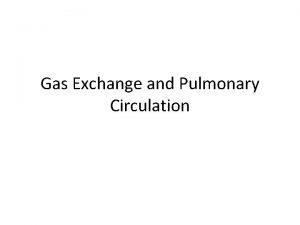Chapter 22 Gas Exchange Copyright 2005 Pearson Education




























- Slides: 28

Chapter 22 Gas Exchange Copyright © 2005 Pearson Education, Inc. Publishing as Benjamin Cummings

Surviving in Thin Air • The high mountains of the Himalayas – Have claimed the lives of even the world’s top mountain climbers • The air at the height of the world’s highest peak, Mt. Everest – Is so low in oxygen that most people would pass out instantly if exposed to it Copyright © 2005 Pearson Education, Inc. Publishing as Benjamin Cummings

• Twice a year, flocks of geese migrate over the Himalayas – They are able to fly at such a high altitude because of the efficiency of their lungs – These birds have blood with hemoglobin with a very high affinity for oxygen – This adaptation allows them to carry large amounts of oxygen to their tissues to exchange with carbon dioxide Copyright © 2005 Pearson Education, Inc. Publishing as Benjamin Cummings

• The process of gas exchange, often called respiration – Is the interchange of O 2 and CO 2 between an organism and its environment Copyright © 2005 Pearson Education, Inc. Publishing as Benjamin Cummings

MECHANISMS OF GAS EXCHANGE 22. 1 Overview: Gas exchange involves breathing, transport of gases, and exchange of gases with tissue cells • The three phases of gas exchange O 2 1 CO 2 Breathing Lung 2 Circulatory system Transport of gases by the circulatory system Mitochondria 3 Figure 22. 1 Exchange of gases with body cells Copyright © 2005 Pearson Education, Inc. Publishing as Benjamin Cummings CO 2 Capillary Cell O 2

• Gas exchange – Provides O 2 for cellular respiration and removes its waste product, CO 2 Copyright © 2005 Pearson Education, Inc. Publishing as Benjamin Cummings

22. 2 Animals exchange O 2 and CO 2 across moist body surfaces • Respiratory surfaces – Must be thin and moist for diffusion of O 2 and CO 2 to occur Copyright © 2005 Pearson Education, Inc. Publishing as Benjamin Cummings

• Some animals, like the earthworm – Use their entire skin as a gas-exchange organ Cut Cross section of respiratory surface (the skin covering the body) CO 2 Figure 22. 2 A Copyright © 2005 Pearson Education, Inc. Publishing as Benjamin Cummings Capillaries

• In most animals – Specialized body parts provide large respiratory surfaces for gas exchange Body surface Respiratory surface (gill) CO 2 Body cells (no capillaries) O 2 CO 2 Figure 22. 2 C Capillary O 2 Body surface Figure 22. 2 B CO 2 Figure 22. 2 D Copyright © 2005 Pearson Education, Inc. Publishing as Benjamin Cummings O 2 Respiratory surface (air tubes) Respiratory surface (within lung) O 2 Capillary

22. 3 Gills are adapted for gas exchange in aquatic environments • Gills are extensions of the body – That absorb O 2 dissolved in water Copyright © 2005 Pearson Education, Inc. Publishing as Benjamin Cummings

• In a fish, gas exchange – Is enhanced by ventilation and the countercurrent flow of water and blood Gill arch Oxygen-poor blood Direction of water flow Lamella Oxygen-rich blood Figure 22. 3 Copyright © 2005 Pearson Education, Inc. Publishing as Benjamin Cummings 30% 5% 60 % 15% % 40 80% Blood vessels 10 0% 70 % Gill arch % O 2 in water flowing over lamellae % O in blood 2 flowing through capillaries Gill in lamellae filaments Countercurrent exchange

22. 4 The tracheal system of insects provides direct exchange between the air and body cells • Land animals – Exchange gases by breathing air Copyright © 2005 Pearson Education, Inc. Publishing as Benjamin Cummings

22. 5 Terrestrial vertebrates have lungs • In mammals, air inhaled through the nostrils – Passes through the pharynx and larynx into the trachea, bronchi, and bronchioles Nasal cavity Pharynx (Esophagus) Larynx Left lung Trachea Right lung Bronchus Bronchiole Diaphragm Figure 22. 5 A Copyright © 2005 Pearson Education, Inc. Publishing as Benjamin Cummings (Heart)

• The bronchioles end in clusters of tiny sacs called alveoli – Oxygen-rich blood Where gas exchange occurs Oxygen-poor blood Alveoli Blood capillaries Figure 22. 5 B, C Copyright © 2005 Pearson Education, Inc. Publishing as Benjamin Cummings Colorized SEM 6, 200 Bronchiole

CONNECTION 22. 6 Smoking is a deadly assaults on our respiratory system • Mucus and cilia in the respiratory passages – Protect the lungs – Can be destroyed by smoking Copyright © 2005 Pearson Education, Inc. Publishing as Benjamin Cummings

• Smoking – Causes lung cancer, heart disease, and emphysema Lung Heart Figure 22. 6 Copyright © 2005 Pearson Education, Inc. Publishing as Benjamin Cummings

22. 7 Breathing ventilates the lungs • Breathing – Is the alternation of inhalation and exhalation Copyright © 2005 Pearson Education, Inc. Publishing as Benjamin Cummings

• The contraction of rib muscles and the diaphragm – Expands the chest cavity and reduces air pressure in the alveoli (negative pressure breathing) Rib cage expands as rib muscles contract Rib cage gets smaller as rib muscles relax Air inhaled Air exhaled Lung Diaphragm Figure 22. 7 A Diaphragm contracts (moves down) Diaphragm relaxes (moves up) Inhalation Exhalation Copyright © 2005 Pearson Education, Inc. Publishing as Benjamin Cummings

• Vital capacity is the maximum volume of air we can inhale and exhale – But our lungs still hold a residual volume Copyright © 2005 Pearson Education, Inc. Publishing as Benjamin Cummings

22. 9 Breathing is automatically controlled • Breathing control centers in the brain – Keep breathing in tune with body needs, sensing and responding to the CO 2 level in the blood Brain Cerebrospinal fluid Pons Medulla Breathing control centers stimulated by: Nerve signals trigger contraction of muscles CO 2 increase / p. H decrease in blood CO 2 and O 2 sensors in aorta Diaphragm Figure 22. 8 Rib muscles Copyright © 2005 Pearson Education, Inc. Publishing as Benjamin Cummings Nerve signals indicating CO 2 and O 2 levels

• A drop in blood p. H – Triggers an increase in the rate and depth of breathing Copyright © 2005 Pearson Education, Inc. Publishing as Benjamin Cummings

TRANSPORT OF GASES IN THE BODY 22. 9 Blood transports respiratory gases • The heart pumps oxygen-poor blood to the lungs – Where it picks up O 2 and drops off CO 2 • Then the heart pumps the oxygen-rich blood to body cells – Where it drops off O 2 and picks up CO 2 Copyright © 2005 Pearson Education, Inc. Publishing as Benjamin Cummings

• Gas transport and exchange in the body Inhaled air Exhaled air Alveolar epithelial cells Air spaces CO 2 2 CO O 2 Alveolar capillaries of lung CO 2 -rich, O 2 -poor blood O 2 -rich, CO 2 -poor blood Heart Tissue capillaries C O 2 CO 2 Interstitial O 2 fluid Figure 22. 9 Tissue cells throughout body Copyright © 2005 Pearson Education, Inc. Publishing as Benjamin Cummings

• Gases diffuse down partial-pressure gradients – In the lungs and the tissues Copyright © 2005 Pearson Education, Inc. Publishing as Benjamin Cummings

22. 10 Hemoglobin carries O 2 and helps transport CO 2 and buffer the blood • Hemoglobin in red blood cells – Transports oxygen, helps buffer the blood and carries some CO 2 Iron atom O 2 loaded in lungs O 2 unloaded in tissues Heme group Figure 22. 10 Polypeptide chain Copyright © 2005 Pearson Education, Inc. Publishing as Benjamin Cummings

• Most CO 2 in the blood CO 2 Carbon dioxide – Is transported as bicarbonate ions in the plasma + H 2 O Water Copyright © 2005 Pearson Education, Inc. Publishing as Benjamin Cummings H 2 CO 3 Carbonic acid H+ Hydrogen ions + HCO 3– Bicarbonate

CONNECTION 22. 11 The human fetus exchanges gases with the mother’s bloodstream • A human fetus – Exchanges gases with maternal blood in the placenta Placenta, containing maternal blood vessels and fetal capillaries Umbilical cord, containing fetal blood vessels Amniotic fluid Uterus Figure 22. 11 Copyright © 2005 Pearson Education, Inc. Publishing as Benjamin Cummings

• Fetal hemoglobin – Enhances oxygen transfer from maternal blood • At birth, increasing CO 2 in the fetal blood – Stimulates the breathing control centers to initiate breathing Copyright © 2005 Pearson Education, Inc. Publishing as Benjamin Cummings
 Gas exchange key events in gas exchange
Gas exchange key events in gas exchange Copyright 2005 pearson prentice hall inc
Copyright 2005 pearson prentice hall inc Pearson education limited 2005
Pearson education limited 2005 Pearson education limited 2005
Pearson education limited 2005 Pearson education ltd
Pearson education ltd Copyright pearson education inc
Copyright pearson education inc Copyright 2010 pearson education inc
Copyright 2010 pearson education inc Copyright 2009 pearson education inc
Copyright 2009 pearson education inc 2018 pearson education inc
2018 pearson education inc Copyright 2014 pearson education inc
Copyright 2014 pearson education inc Copyright 2010 pearson education inc
Copyright 2010 pearson education inc Copyright 2010 pearson education inc
Copyright 2010 pearson education inc Copyright by pearson education inc. answers
Copyright by pearson education inc. answers Copyright 2003 pearson education inc
Copyright 2003 pearson education inc Copyright 2009 pearson education inc
Copyright 2009 pearson education inc Copyright pearson education inc
Copyright pearson education inc Copyright 2010 pearson education inc
Copyright 2010 pearson education inc Copyright 2010 pearson education inc
Copyright 2010 pearson education inc Copyright 2010 pearson education inc
Copyright 2010 pearson education inc 2010 pearson education inc
2010 pearson education inc Copyright 2010 pearson education inc
Copyright 2010 pearson education inc Composition copyright example
Composition copyright example Pearson education inc all rights reserved
Pearson education inc all rights reserved Copyright 2009 pearson education inc
Copyright 2009 pearson education inc Copyright 2009 pearson education inc
Copyright 2009 pearson education inc Copyright 2009 pearson education inc
Copyright 2009 pearson education inc Copyright 2009 pearson education inc
Copyright 2009 pearson education inc Copyright pearson education inc
Copyright pearson education inc Pearson education inc publishing as pearson prentice hall
Pearson education inc publishing as pearson prentice hall


